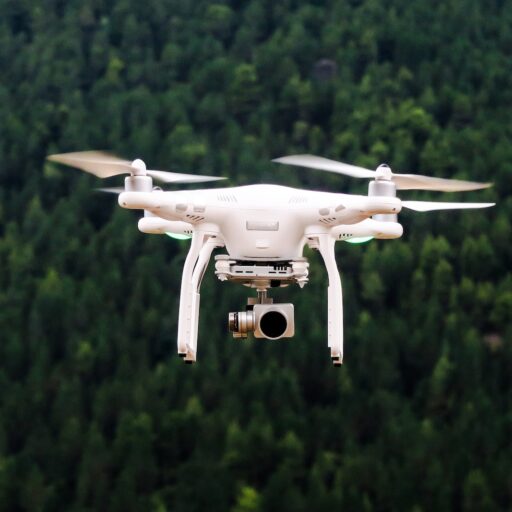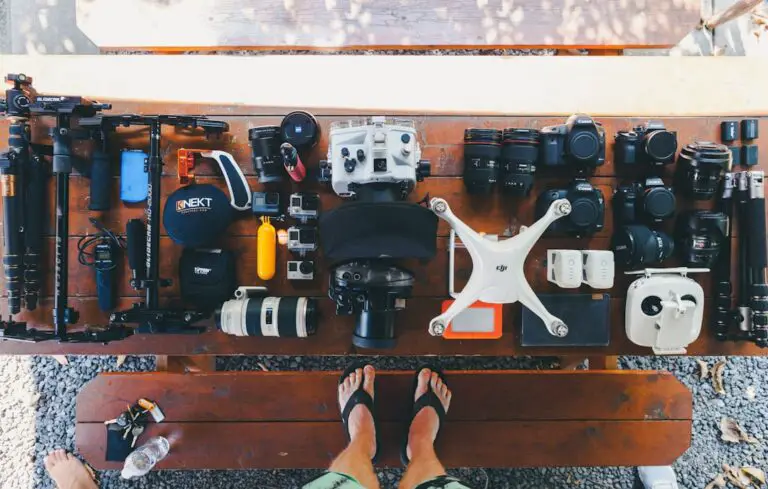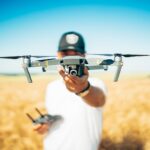Support our educational content for free when you purchase through links on our site. Learn more
US Drone Market Size in 2025: 12 Game-Changing Insights 🚀
Ready to uncover the true scale of the US drone market in 2025? Whether you’re a hobbyist dreaming of your first quadcopter or a business eyeing the next big aerial opportunity, this article is your ultimate flight plan. Did you know the US commercial drone market alone is projected to nearly quadruple in value by 2033? That’s right — from niche novelty to indispensable tool, drones are reshaping industries and skies alike.
But what’s driving this explosive growth? How are regulations, technology, and geopolitics shaping the future? And which brands are leading the charge? Stick around as we break down 12 game-changing insights that will help you navigate this booming market with confidence. Plus, we’ll share personal pilot stories and expert tips from the Drone Brands™ team to help you soar above the competition.
Key Takeaways
- The US drone market is booming, with commercial segments expected to grow at a CAGR of over 15% through 2033.
- Regulatory frameworks like FAA Part 107 and BVLOS approvals are unlocking new commercial opportunities.
- Emerging tech trends such as AI autonomy, 5G connectivity, and Drone-as-a-Service are revolutionizing drone capabilities.
- Geopolitical factors and “Buy American” policies are reshaping the competitive landscape, boosting domestic manufacturers like Skydio and AeroVironment.
- Consumer drones remain popular, but commercial and government applications are driving the most rapid growth.
- Our expert pilots recommend DJI Mini series for beginners and Skydio for advanced autonomous operations.
👉 Shop top US drone brands here:
- DJI Mini Series: Amazon | Walmart | DJI Official
- Skydio Autonomous Drones: Skydio Official
- Autel Robotics: Amazon | Autel Official
Table of Contents
- ⚡️ Quick Facts & Drone Market Insights You Need to Know!
- 🕰️ A Brief Flight Through the History of the US Drone Market: From Hobby to High-Tech
- 📊 The US Drone Market at a Glance: Size, Share, and Growth Projections
- 🚀 Propelling the Future: Dynamics Driving US Drone Industry Growth
- 🔍 A Closer Look: Segmenting the US Drone Market for Deeper Understanding
- By Drone Type: Fixed-Wing, Rotary Blade, and Hybrid UAVs
- By Application: From Agriculture to Entertainment & Beyond
- By End-User: Commercial, Consumer, and Government/Military
- By Payload Capacity: Lightweights to Heavy-Lifters
- By Propulsion Type: Electric, Gasoline, and Hybrid Power
- By Operating Mode: Remotely Piloted, Partially Piloted, and Fully Autonomous
- By System Component: Hardware, Software, and Services
- 🗺️ Where Are Drones Soaring? Regional Dynamics Across the US
- 👑 Who’s Piloting the Future? Leading Brands & Innovators in the US Drone Space
- 💡 Game Changers: Recent Innovations & Strategic Moves in the Drone Industry
- ✈️ Regulatory Runway: The FAA’s Role in Shaping the US Drone Market
- 💰 Investment Opportunities: Soaring Capital in the Drone Sector
- 🤝 Our Team’s Take: Personal Anecdotes & Expert Recommendations
- 🔮 The Future is Now: Predicting the Next Decade of Drone Innovation
- Conclusion
- Recommended Links
- FAQ
- Reference Links
Hey there, fellow aviators and tech enthusiasts! Welcome to the Drone Brands™ hangar. We’re a team of seasoned pilots who’ve flown everything from tiny toy drones in our living rooms to high-end cinematic rigs over Hollywood sets. Today, we’re tackling a big one: the sheer scale of the US drone market. It’s a beast, and it’s growing faster than a racing drone on a straightaway. So, strap in as we give you the full 360-degree view of the industry, from the jaw-dropping numbers to the brands battling for air supremacy.
⚡️ Quick Facts & Drone Market Insights You Need to Know!
Let’s get right to it. You want the numbers, the juicy details that paint the big picture. Well, you’ve come to the right place. The US drone market isn’t just taking off; it’s achieving orbital velocity! For a deeper dive, check out our comprehensive article on drone statistics.
Here are the key stats you need to know, based on various industry reports:
| Metric | 2024 Estimated Value | 2030-2034 Projected Value | Key Growth Rate (CAGR) | Source |
|---|---|---|---|---|
| US Commercial Drone Market | USD 7.9 Billion | USD 28.8 Billion by 2033 | 15.46% (2025-2033) | IMARC Group |
| US Drone Market (Overall) | USD 7.6 Billion | USD 19.3 Billion by 2033 | 10.46% (2025-2033) | IMARC Group |
| US Consumer Drone Market | USD 1.69 Billion | USD 3.00 Billion by 2030 | 10.0% (2024-2030) | Grand View Research |
| North American Market Dominance | Over 39% of the global market share in 2024. | – | 13% (US-specific CAGR 2025-2030) | Grand View Research |
And what about the number of drones darkening our skies? As of August 2024, the Federal Aviation Administration (FAA) had 785,827 drones registered in the U.S. That’s a near-even split between 390,027 commercial drones and 388,838 registered recreational pilots. It’s a sky full of opportunity!
🕰️ A Brief Flight Through the History of the US Drone Market: From Hobby to High-Tech
It feels like drones appeared overnight, but their journey from military secret to mainstream marvel has been decades in the making. Think of it like this: UAVs (Unmanned Aerial Vehicles) were the exclusive toys of the military, used for surveillance and reconnaissance missions where you wouldn’t want to send a pilot.
Then, something amazing happened. The technology became smaller, cheaper, and more accessible. Hobbyists and tinkerers started building their own quadcopters, and a vibrant DIY community was born. But the real game-changer for the commercial market was the FAA’s introduction of the Part 107 regulations in 2016. Suddenly, there was a clear, legal pathway for businesses to use drones. This was the moment the floodgates opened, transforming drones from a niche hobby into an indispensable business tool. For more on the rules of the sky, check out our category on Drone Laws and Regulations.
📊 The US Drone Market at a Glance: Size, Share, and Growth Projections
Let’s zoom in on the numbers. The US isn’t just a player in the global drone market; it’s the MVP.
📈 Unpacking the US Drone Market: Key Insights & Statistics
North America is the undisputed heavyweight champion, holding the largest market share globally. One report stated, “North America held the dominant commercial drone market share in 2024 and stood at USD 4.34 billion in 2024 and is expected to dominate the global market during the forecast period.” This dominance is fueled by “the rise in the adoption of commercial drones and the presence of key drone manufacturers in the U.S.”
The sheer number of registered drones tells a powerful story. According to the FAA, there were 872,694 drones registered in the U.S. back in May 2021, with those numbers expected to grow significantly through 2030 due to rising demand.
😷 How the Pandemic Reshaped the US Drone Industry Landscape: COVID-19 Impact
Remember 2020? While the world ground to a halt, the drone industry found a new gear. The pandemic, in a strange way, became a massive proof-of-concept for drone technology. The need for contactless solutions skyrocketed. Drones were suddenly being used for:
- Crowd monitoring to ensure social distancing.
- Video surveillance of public spaces.
- Pickup and delivery of urgent medical supplies and everyday goods.
This surge in demand showcased the versatility and efficiency of drones, reducing the need for human presence in potentially hazardous situations and accelerating their adoption across various sectors.
🚀 Propelling the Future: Dynamics Driving US Drone Industry Growth
So, what’s the rocket fuel behind this explosive growth? It’s a potent cocktail of cutting-edge tech, smart regulations, and insatiable demand.
💡 The Sky’s the Limit: Emerging Trends in US Drone Technology & Adoption
The drones of today make the models from five years ago look like paper airplanes. We’re talking about a technological revolution. Key trends include:
- Artificial Intelligence (AI) and Machine Learning (ML): This is the secret sauce making drones truly “smart.” AI is transforming drones from remote-controlled tools into autonomous agents that can navigate complex environments, identify objects, and even make decisions without human intervention.
- Drone-as-a-Service (DaaS): Don’t have the capital for a high-end drone fleet? No problem! The DaaS model allows businesses to access sophisticated drone technology without the hefty price tag, “democratizing the use of drones and making them more accessible to small businesses.”
- 5G Integration: The rollout of 5G networks will be a game-changer, enabling faster, more reliable real-time data streaming from drones. This is crucial for live event coverage, emergency response, and managing entire fleets of autonomous drones.
- Beyond Visual Line of Sight (BVLOS): This is the holy grail of commercial drone operations. As regulatory frameworks evolve, more companies are getting approval for BVLOS missions, which will unlock the true potential for long-distance deliveries and large-scale inspections.
Keep up with the latest breakthroughs in our Drone Industry News section.
💨 What’s Fueling the Drone Boom? Key Driving Factors
✅ Technological Advancements: Better batteries, more powerful sensors, and smarter software are constantly pushing the boundaries of what’s possible.
✅ Supportive Regulations: The FAA’s Part 107 framework created a clear path for commercial operations, fostering innovation while ensuring safety.
✅ Growing Enterprise Demand: From agriculture to construction to public safety, industries are realizing that drones save time, reduce costs, and improve safety.
✅ Investment & R&D: Billions of dollars are being poured into drone startups and research, accelerating the pace of innovation.
🚧 Navigating Turbulence: Challenges & Restraints in the US Drone Market
It’s not all smooth flying, of course. The industry faces some significant headwinds:
❌ Regulatory Hurdles: While Part 107 was a great start, regulations for advanced operations like BVLOS are still complex and evolving.
❌ Public Perception: Privacy and safety concerns are still very real for many people. Winning public trust is crucial for widespread adoption.
❌ Security Risks: The threat of malicious drone use, from espionage to physical attacks, is a major concern for government and industry alike.
❌ Technological Limitations: Battery life and payload capacity are still limiting factors for many applications, though they are improving rapidly.
🔍 A Closer Look: Segmenting the US Drone Market for Deeper Understanding
The “drone market” isn’t one single entity. It’s a complex ecosystem with many different niches. Let’s break it down.
| Segment | Dominant Sub-Segment | Fastest-Growing Sub-Segment | Key Insights |
|---|---|---|---|
| By Drone Type | Rotary Blade / Multi-rotor | Hybrid (VTOL) | Multi-rotors are praised for their stability and maneuverability, while hybrids combine the endurance of fixed-wings with the versatility of multi-rotors. |
| By Application | Filming & Photography | Delivery & Logistics | While media and entertainment currently lead, the use of drones for last-mile delivery is poised for explosive growth. |
| By End-User | Military | Consumer | The military remains the largest end-user, but the consumer market is growing rapidly due to increasing affordability and accessibility. |
| By Payload | <25 Kg | 2 Kg – 25 Kg | Lighter drones are common for photography and inspection, while mid-range payloads are crucial for public safety and logistics. |
| By Propulsion | Electric / Battery-powered | Hybrid / Hydrogen Fuel Cell | Battery tech is advancing, but alternative power sources like hydrogen promise significantly longer flight times. |
| By Operating Mode | Remotely Piloted | Fully Autonomous | While most drones are still flown by pilots, advancements in AI are fueling the rapid growth of fully autonomous systems. |
| By System Component | Hardware | Services | Hardware (the drone itself) is the biggest slice of the pie, but services like aerial photography and data analysis are the fastest-growing area. |
This segmentation opens up a world of Drone Business Opportunities.
🗺️ Where Are Drones Soaring? Regional Dynamics Across the US
Drone adoption isn’t uniform across the country. According to one detailed analysis, the Southeast region is leading the pack, projected to hold the largest market share due to “favorable government initiatives and rising demand for security purposes.” Not far behind, the Western region is forecasted to hold a significant 25.1% of the US market share by 2034, driven by tech hubs and vast agricultural and industrial landscapes perfect for drone applications.
👑 Who’s Piloting the Future? Leading Brands & Innovators in the US Drone Space
The battle for the skies is fierce, with a mix of international giants and homegrown heroes. Here’s a look at some of the key players shaping the industry. For more in-depth analysis, fly over to our Drone Brand Guides.
| Company | Country of Origin | Specialty |
|---|---|---|
|
SZ DJI Technology Co., Ltd. |
China | Consumer & Commercial Drones |
|
Skydio, Inc. |
U.S. | Autonomous Drones |
|
Autel Robotics |
China | High-End Consumer & Enterprise Drones |
|
Parrot Drone SAS |
France | Commercial & Agricultural Drones |
|
AeroVironment Inc. |
U.S. | Military & Commercial Drones |
|
Teal Drones |
U.S. | Military & Government Drones |
|
AgEagle Aerial Systems Inc. |
U.S. | Agricultural & Delivery Drones |
|
Zipline |
U.S. | Medical & Logistics Delivery Drones |
However, there’s a major geopolitical storm brewing. Concerns over data security have put Chinese manufacturers, particularly market-leader DJI, under intense scrutiny in the U.S. A recent executive order and the 2025 National Defense Authorization Act (NDAA) are pushing for a national security review of DJI. If DJI is deemed a threat, new models could be blocked from sale in the U.S. This is a massive deal, and it’s creating uncertainty for pilots and businesses. The first YouTube video we’ve featured, viewable at the top of this article, covers this topic in great detail and is a must-watch for any drone owner. You can jump to it here: #featured-video.
👉 Shop Top Drone Brands on:
- DJI: Amazon | Walmart | DJI Official Website
- Autel Robotics: Amazon | Walmart | Autel Official Website
- Skydio: Skydio Official Website
- Parrot: Amazon | Walmart | Parrot Official Website
💡 Game Changers: Recent Innovations & Strategic Moves in the Drone Industry
The drone industry moves at lightning speed. Here are a few recent developments that have caught our eye:
- Amazon’s BVLOS Approval: In May 2024, Amazon received a crucial FAA approval to fly its delivery drones beyond the visual line of sight of its pilots, a major step forward for its Prime Air program.
- AI-Powered Military Drones: In late 2024, the U.S. Department of Defense awarded a contract for AI-driven precision strike drones, highlighting the rapid integration of advanced autonomy in military applications.
- Agricultural Expansion: In early 2025, a partnership between Drone Nerds and ABZ Innovation aimed to expand the lineup of advanced spraying drones for American farms, showcasing the growing specialization in the agricultural sector.
✈️ Regulatory Runway: The FAA’s Role in Shaping the US Drone Market
You can’t talk about the US drone market without talking about the Federal Aviation Administration (FAA). They are the air traffic controllers for the entire industry, and their rules shape everything.
Part 107 and Beyond Visual Line of Sight (BVLOS) Regulations
The FAA’s Part 107 rule is the foundation of commercial drone flight in the US. It established the requirements for a remote pilot certificate and the basic operational rules for flying drones under 55 pounds. It was a monumental step that legitimized the industry.
Now, the focus is on BVLOS. The ability to fly drones beyond the pilot’s line of sight is critical for scaling operations like package delivery, long-range infrastructure inspection, and large-area mapping. The FAA is actively working on creating a safe and repeatable framework for these advanced operations. As one report notes, “As regulatory frameworks evolve, more companies are obtaining approvals for advanced operations, including beyond visual line of sight (BVLOS) missions.”
Impact of “Buy American” Policies and Domestic Production
The geopolitical tensions with China have led to a strong push for a “Buy American” approach to drone technology, especially for government and military use. This has created a massive opportunity for US-based manufacturers like Skydio, Teal Drones, and AeroVironment. These companies are gaining prominence by aligning with federal priorities and developing secure, domestically-made drone platforms. This shift is intended to bolster national security and foster a self-reliant domestic drone industry.
💰 Investment Opportunities: Soaring Capital in the Drone Sector
Where there’s this much growth, investment is sure to follow. The drone sector is attracting significant capital from venture funds and corporate investors. This funding is fueling R&D into next-generation hardware and, increasingly, the software and analytics platforms that turn drone-collected data into actionable insights.
The rise of the Drone-as-a-Service (DaaS) model is particularly interesting from an investment perspective. It lowers the barrier to entry for businesses, creating a massive addressable market for service providers. As one analysis puts it, “The ability to access drone technology without heavy upfront investment is democratizing the use of drones and making them more accessible to small businesses and industries with niche needs.” This opens up countless Drone Business Opportunities.
🤝 Our Team’s Take: Personal Anecdotes & Expert Recommendations
Here at Drone Brands™, we’ve had a front-row seat to this evolution. I remember one of our first big commercial gigs, inspecting a massive solar farm in the Mojave Desert. A few years ago, that job would have taken a team of engineers weeks of painstaking, manual work. We did it in two days with a single drone equipped with a thermal camera. The data we provided identified dozens of faulty panels the client didn’t even know were failing. That’s the power of this technology.
When people ask us for recommendations, it really depends on the mission.
- For aspiring aerial photographers and hobbyists, it’s almost impossible to ignore the DJI Mini series. They pack incredible camera quality into a tiny, user-friendly package. It’s the perfect entry point. Check out our guides for Beginner Drones.
- For serious commercial operators, especially in construction or inspection where you’re flying near obstacles, the autonomous flight capabilities of a Skydio drone are simply mind-blowing. The way it navigates complex environments on its own feels like magic and is a huge safety advantage.
- If you’re concerned about data security or need a “Blue UAS” (approved for government use), you should be looking at American manufacturers like Teal Drones or AeroVironment.
🔮 The Future is Now: Predicting the Next Decade of Drone Innovation
So, what’s next? If you think today’s drone market is impressive, just wait. By 2034, some analysts project the US market could be worth a staggering $31.34 billion. We’re on the cusp of seeing drones become fully integrated into our daily lives.
Look for these developments to become mainstream:
- Urban Air Mobility (UAM): Yes, we’re talking about “flying taxis.” Companies are already testing autonomous passenger drones.
- Fully Autonomous Logistics: Imagine a sky filled with drones delivering everything from your pizza to your prescriptions, all managed by sophisticated AI traffic control systems.
- Drone Swarms: AI will enable fleets of drones to work cooperatively on complex tasks, from precision agriculture to search and rescue missions.
The sky is no longer the limit; it’s the new frontier. The US drone market is a dynamic, rapidly evolving space with incredible potential for innovation, business, and maybe just a little bit of fun.
Conclusion
After cruising through the vast skies of the US drone market, it’s clear this sector is not just soaring—it’s rocketing into the future. From explosive growth rates and cutting-edge AI-powered drones to regulatory frameworks that are steadily evolving to keep pace, the US drone market is a thrilling blend of innovation, opportunity, and challenge.
We’ve seen how the market is segmented into diverse niches—from lightweight consumer drones like DJI’s Mini series, perfect for beginners and hobbyists, to advanced autonomous platforms like Skydio designed for complex commercial and government applications. The push for domestic manufacturing and “Buy American” policies are reshaping the competitive landscape, creating exciting opportunities for US-based innovators such as Teal Drones and AeroVironment.
The pandemic accelerated drone adoption by proving their value in contactless operations, and the future promises even more dramatic advances: urban air mobility, drone swarms, and fully autonomous logistics are just over the horizon.
If you’re looking to get involved, whether as a pilot, business, or investor, the key takeaway is this: the US drone market is a dynamic, fast-growing ecosystem with room for everyone—from hobbyists to enterprise-level operators. The sky is no longer the limit; it’s the launchpad.
Recommended Links
👉 Shop Top Drone Brands & Products:
- DJI Mini Series:
Amazon | Walmart | DJI Official Website - Skydio Autonomous Drones:
Skydio Official Website - Autel Robotics Drones:
Amazon | Walmart | Autel Official Website - Teal Drones (Government & Security):
Teal Drones Official Website - AeroVironment (Military & Commercial):
AeroVironment Official Website
Recommended Books on Drones and UAV Technology:
- Drones: Their Many Civilian Uses and the U.S. Laws Surrounding Them by David R. Ellis
Amazon Link - Introduction to Unmanned Aircraft Systems by R. Kurt Barnhart, Douglas M. Marshall, and Eric Shappee
Amazon Link - The Drone Pilot’s Handbook by Adam Juniper
Amazon Link
Frequently Asked Questions
What is the current size of the US drone market?
As of 2024, the US drone market is estimated to be worth approximately $7.6 to $7.9 billion, depending on the source. This includes commercial, consumer, and government drone segments. The commercial drone market alone accounts for a significant portion, with estimates around $4.3 billion. These figures reflect the growing adoption of drones across industries such as agriculture, construction, surveillance, and delivery. The FAA’s drone registration data supports this growth, with over 785,000 registered drones in the US as of mid-2024.
How fast is the US drone market growing annually?
The US drone market is growing at a robust compound annual growth rate (CAGR) of approximately 13% to 17% over the next decade. Different reports vary slightly, but all agree on strong double-digit growth fueled by technological advancements, expanding commercial applications, and supportive regulatory frameworks. Autonomous drone segments and fixed-wing drones are expected to grow even faster, with some projections nearing 20% CAGR.
Which industries are driving the growth of the US drone market?
Several industries are key growth drivers:
- Agriculture: Precision farming with drones for crop monitoring and spraying.
- Construction & Infrastructure: Site inspection, progress monitoring, and safety assessments.
- Public Safety & Security: Surveillance, search and rescue, and disaster response.
- Logistics & Delivery: Last-mile delivery pilots and expanding BVLOS operations.
- Media & Entertainment: Aerial photography and cinematography.
- Military & Defense: Intelligence, surveillance, and autonomous combat systems.
Each sector benefits uniquely from drone technology, contributing to the overall market expansion.
What are the key trends in the US drone market?
Key trends shaping the market include:
- AI and Machine Learning: Enabling autonomous navigation and intelligent decision-making.
- Drone-as-a-Service (DaaS): Lowering barriers for businesses to adopt drone technology.
- Beyond Visual Line of Sight (BVLOS) Operations: Expanding operational range and use cases.
- 5G Connectivity: Improving real-time data transmission and fleet management.
- Hydrogen Fuel Cells & Hybrid Propulsion: Extending flight times and payload capacity.
- Increased Focus on Domestic Manufacturing: Driven by national security concerns.
These trends are accelerating innovation and adoption across commercial and government sectors.
How does the US drone market compare to the global drone market?
The US drone market is one of the largest and most advanced globally, accounting for roughly 39% or more of the global drone market share. While China-based DJI dominates the consumer market worldwide, the US leads in military, government, and commercial drone innovation, especially with companies like Skydio and AeroVironment. The US benefits from strong regulatory frameworks (FAA Part 107), significant R&D investment, and a large, diverse economy that fuels demand.
What are the major challenges facing the US drone market?
Despite the growth, the US drone market faces several challenges:
- Regulatory Complexity: BVLOS and autonomous flight rules are still evolving.
- Privacy and Security Concerns: Public skepticism and potential misuse.
- Geopolitical Tensions: Restrictions on Chinese drone manufacturers impact market dynamics.
- Technological Limitations: Battery life and payload capacity constraints.
- Airspace Integration: Managing drone traffic alongside manned aircraft safely.
Addressing these challenges is critical for sustained growth.
How are recreational drones impacting the US drone market size?
Recreational drones make up a significant portion of the total drone population in the US, with FAA registrations nearly equal to commercial drones. While recreational drones contribute less directly to market revenue compared to commercial applications, they drive innovation, brand recognition, and consumer interest. Many commercial pilots started as hobbyists, and the recreational market serves as a vital pipeline for future professional users. Additionally, recreational drone sales help fund R&D and keep manufacturers competitive.
Reference Links
- Grand View Research: Drone Market Size, Share & Growth | Industry Report, 2030
- Fortune Business Insights: Commercial Drone Market Analysis
- Fact.MR: US Drone Market Report
- Federal Aviation Administration (FAA) – UAS Data
- DJI Official Website
- Skydio Official Website
- Autel Robotics Official Website
- Parrot Drones Official Website
- AeroVironment Official Website
- Teal Drones Official Website
That wraps up our comprehensive flight through the US drone market! Ready to take your own drone adventure to new heights? Keep your eyes on the skies and your fingers on the controls — the future is flying your way. 🚁✨







